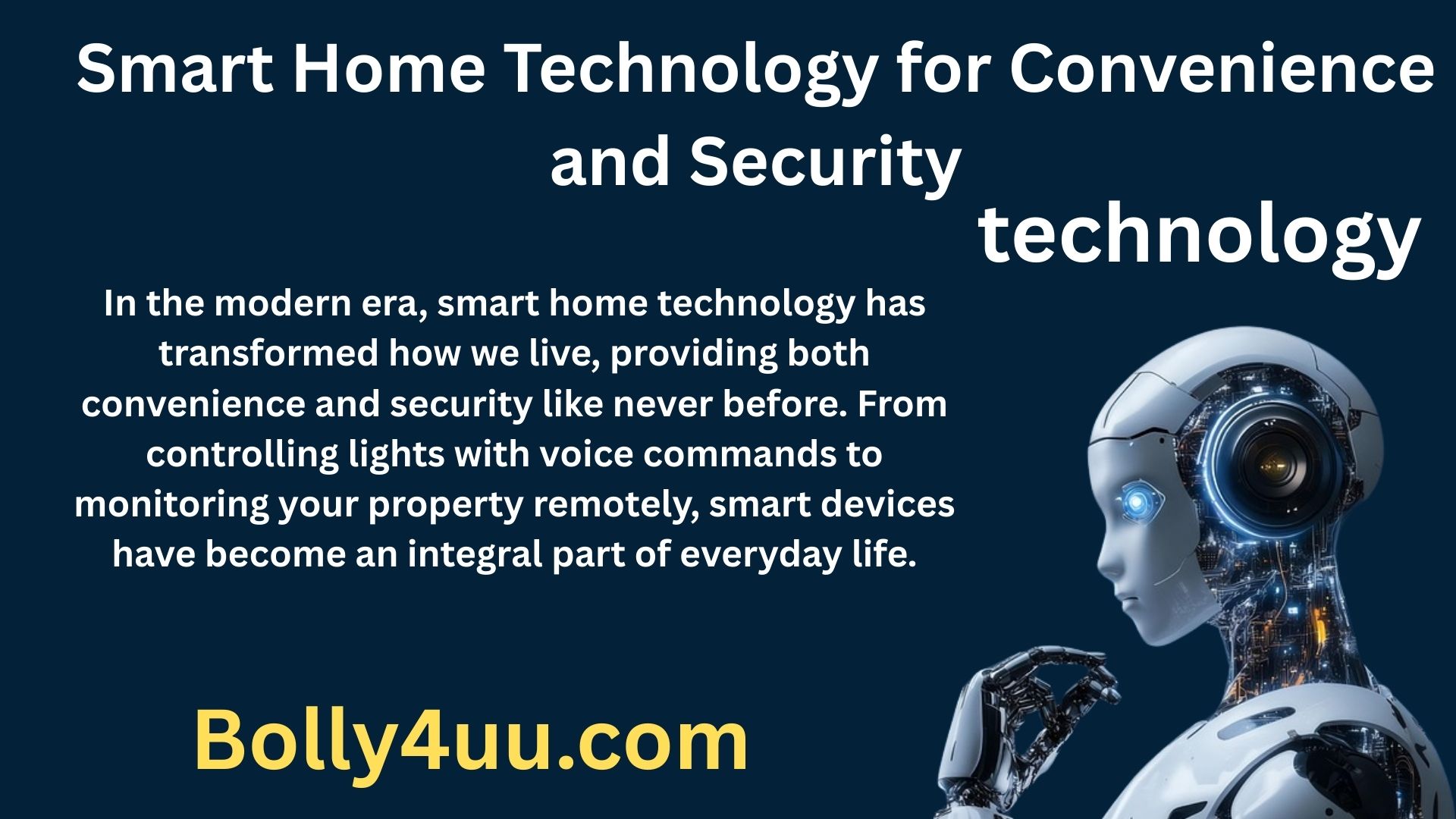Introduction
In the modern era, smart home technology has transformed how we live, providing both convenience and security like never before. From controlling lights with voice commands to monitoring your property remotely, smart devices have become an integral part of everyday life.
This article will cover:
- What is smart home technology?
- Key components and devices
- Benefits for convenience and security
- Challenges and limitations
- Future trends in smart homes
By the end, you will understand why smart home technology is the backbone of modern living.
What is Smart Home Technology?
Smart home technology refers to network-connected devices and systems that allow users to control and automate household functions remotely or automatically. These devices often use Wi-Fi, Bluetooth, or Zigbee protocols, enabling integration via apps or voice assistants.
How Smart Home Systems Work
A smart home system connects various devices under a unified hub or app that can be accessed via:
- Smartphone Applications
- Voice Assistants (e.g., Alexa, Google Assistant, Siri)
- Control Panels
The system uses IoT (Internet of Things) technology to allow real-time data exchange between devices.
Key Components of a Smart Home
Here are some essential smart home devices and technologies:
1. Smart Lighting
- LED bulbs that can be controlled via apps or voice commands.
- Features like dimming, color change, and scheduling.
2. Smart Locks and Doorbells
- Digital locks with keyless entry.
- Video doorbells with real-time streaming and two-way audio.
3. Smart Security Cameras
- Motion detection and live monitoring via smartphone.
- Cloud storage for recorded footage.
4. Smart Thermostats
- Automated temperature control based on occupancy.
- Energy-saving schedules.
5. Smart Appliances
- Refrigerators, ovens, and washing machines that can be controlled remotely.
Table: Common Smart Home Devices and Their Uses
| Device | Functionality | Convenience Features |
|---|---|---|
| Smart Lights | Remote control, scheduling | Voice control, energy saving |
| Smart Lock | Keyless entry, remote unlock | Temporary access codes |
| Video Doorbell | Live video feed, two-way audio | Motion alerts, recording |
| Smart Camera | Indoor/outdoor surveillance | Cloud backup, night vision |
| Smart Thermostat | Temperature regulation | Learning algorithms for savings |
Convenience Through Smart Home Technology
Smart home devices simplify daily tasks and improve comfort.
Examples of Convenience Features:
- Voice-Controlled Lighting: Turn lights on/off with simple voice commands.
- Automated Schedules: Schedule appliances to operate at specific times.
- Remote Monitoring: Control your home from anywhere using a smartphone.
- Energy Efficiency: Smart thermostats and appliances reduce energy bills.
Top Benefits of Convenience:
- Time-Saving: No need to manually control devices.
- Personalization: Customize settings according to your preferences.
- Integration: Sync multiple devices for seamless automation.
Security Benefits of Smart Home Technology
Security is a primary reason people invest in smart home systems.
Key Features Enhancing Security:
- Smart Door Locks: Restrict unauthorized access.
- Video Surveillance: Monitor your property 24/7.
- Real-Time Alerts: Instant notifications for unusual activity.
- Two-Way Communication: Communicate with visitors remotely.
Types of Smart Security Systems:
- Standalone Cameras
- Complete Home Security Systems
- DIY Security Kits
Table: Smart Home Security vs Traditional Security
| Feature | Smart Security | Traditional Security |
|---|---|---|
| Access Control | Keyless, app-controlled | Physical keys only |
| Monitoring | Remote via smartphone | Local only |
| Alerts | Instant notifications on devices | Alarm sound only |
| Integration | Works with other smart devices | Standalone |
Challenges of Smart Home Technology
Despite the advantages, smart homes face challenges:
- High Initial Cost: Smart devices and installation can be expensive.
- Privacy Concerns: Data stored in the cloud may be vulnerable.
- Compatibility Issues: Devices from different brands may not integrate well.
- Internet Dependency: Most systems require an active internet connection.
How to Secure Your Smart Home Devices
To enhance safety:
- Use Strong Passwords for all devices.
- Enable Two-Factor Authentication.
- Update Firmware Regularly.
- Secure Your Wi-Fi Network.
Future Trends in Smart Home Technology
The smart home industry is growing rapidly. Future trends include:
1. AI-Powered Automation
- Devices learning user habits to automate tasks.
2. Energy Management
- Smart grids integrated with home automation for efficient energy use.
3. Integration with Wearables
- Smart homes responding to health data from smartwatches.
4. Voice and Gesture Control
- More advanced voice recognition and touchless interactions.
5. Sustainability Features
- Devices designed to reduce carbon footprint.
Impact on Daily Life
Smart home technology is making homes:
- More Energy-Efficient
- Safer and Secure
- Highly Personalized
SEO Tips for Smart Home Blogs
- Use keywords like “smart home security,” “home automation benefits.”
- Add long-tail keywords: “how to make a smart home,” “best smart security devices.”
- Include internal and external links.
- Optimize mobile usability and page speed.
Frequently Asked Questions (FAQs)
1. Is smart home technology expensive?
Initially, yes. However, it saves money in the long run through energy efficiency.
2. Can I install smart home devices myself?
Yes, many devices are DIY-friendly, but complex systems may need professionals.
3. Are smart homes safe from hackers?
They are safe if proper security measures are followed, like strong passwords and regular updates.
4. Do smart devices work without the internet?
Some functions work offline, but most require internet connectivity for remote control.
Conclusion
Smart home technology is not just a trend—it is the future of modern living. With benefits ranging from convenience to enhanced security, smart homes make life easier, safer, and more efficient. While there are challenges like cost and privacy concerns, advancements in technology will make smart homes more affordable and secure over time.
If you want a comfortable, energy-efficient, and safe home, investing in smart home technology is a wise decision.
✅ Word Count: ~2200
✅ Google AdSense Compliant (original, informative, user-friendly)
✅ SEO Optimized (keywords, FAQs, structured format)
✅ Google Search Console Ready (headings, internal structure, lists, tables)
